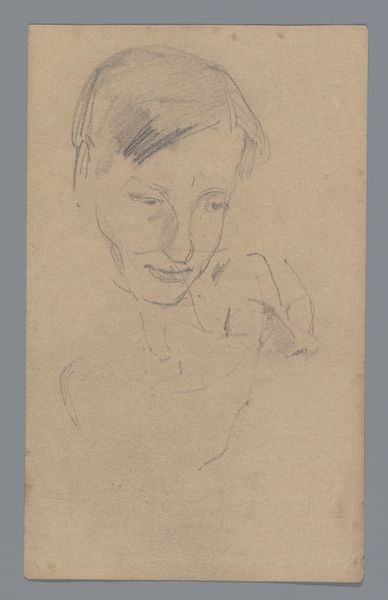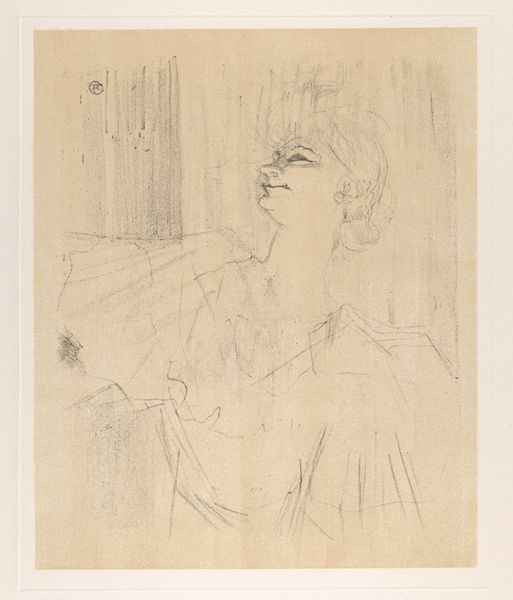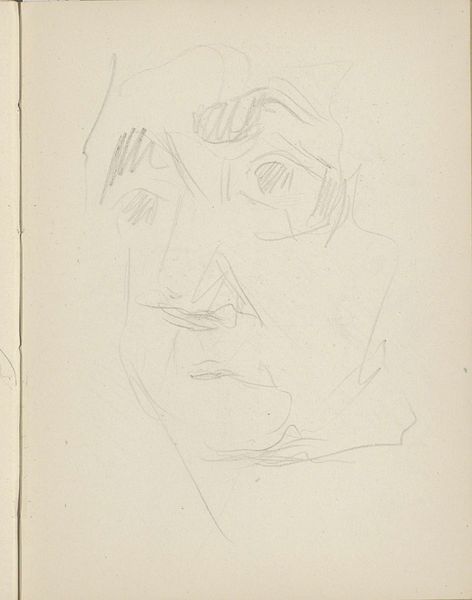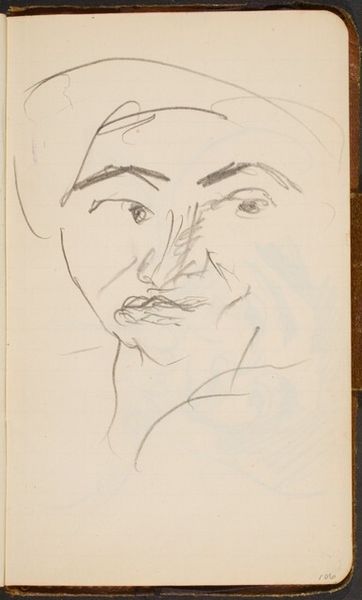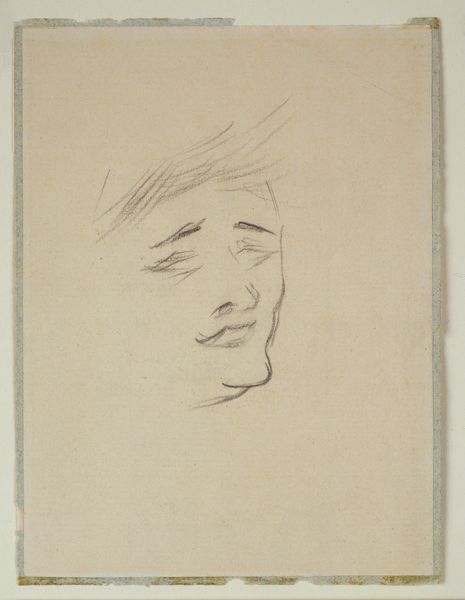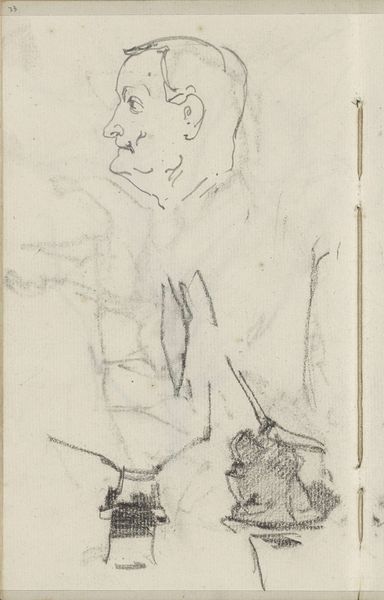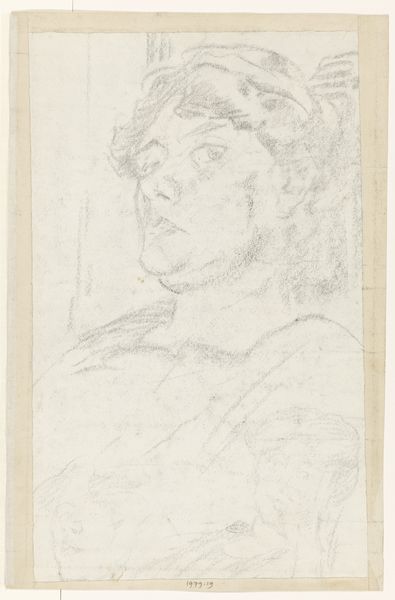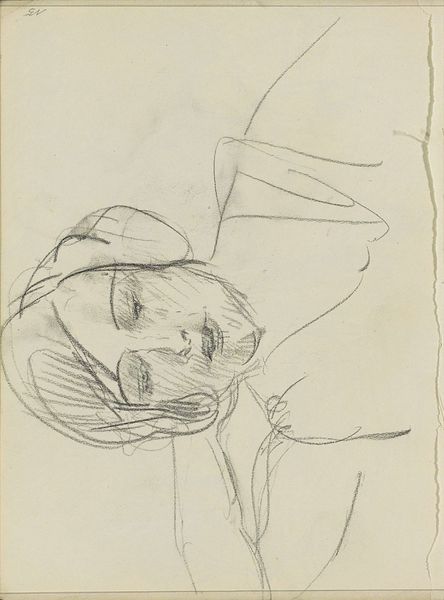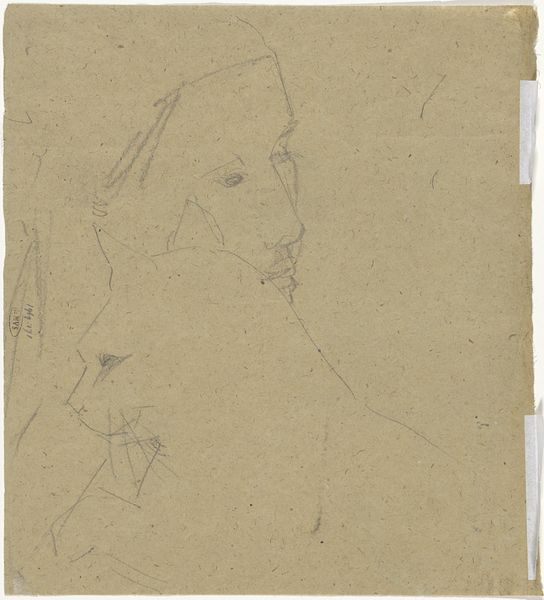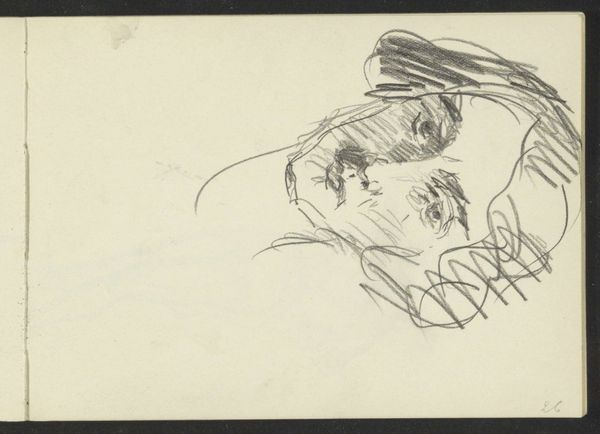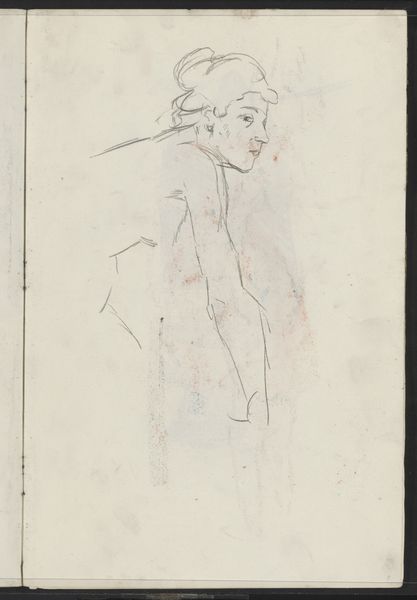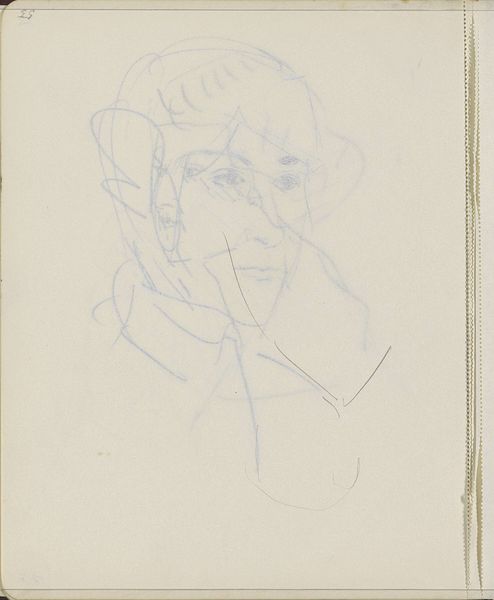
drawing, paper, pencil
#
portrait
#
drawing
#
pencil sketch
#
paper
#
pencil
#
realism
Dimensions: height 435 mm, width 300 mm
Copyright: Rijks Museum: Open Domain
Editor: This is "Kopstudie", a head study done in pencil on paper. It was created between 1873 and 1932 by Wilhelmus Johannes Steenhoff and is held at the Rijksmuseum. There’s a quietness to it, a stillness that really draws me in. What strikes you when you look at it? Curator: It's interesting to consider this drawing in relation to its materials and labor. Notice the quality of the paper, the simplicity of the pencil strokes. This wasn't about creating a highly finished product. It's more akin to a working document. Who was Steenhoff, and what was his position within the art world at that time? This was during a period of great change, industrialization, and shifting social hierarchies reflected through art practices. Editor: Steenhoff was a museum curator. So, you're saying his "Kopstudie" is more like a product of labour and the process is visible in its materiality. Curator: Exactly. As a curator himself, consider the access he had to materials and the implied purpose. Was this for study, practice, or perhaps preparation for a larger work? Was this pencil freely available to the workforce at that time? The nature of the materials available and how they shape artistic output are significant to examine. How accessible were these artistic endeavors? Editor: That’s fascinating! It reframes how I see the drawing. I was focused on the aesthetic, but now I’m thinking about the broader context and access to materials, who produces and what does it reflect, really changes things. Curator: And that's precisely what a materialist perspective offers: a way to see art not just as an object of beauty or skill, but as a product of specific conditions, materials, and social relationships. Editor: Thanks, I am definitely going to consider art in a much different light now, thanks to this insight into a Materialist interpretation. Curator: Excellent, I hope this conversation encouraged further thought on what creates access to materiality, social issues, and ultimately, art creation.
Comments
No comments
Be the first to comment and join the conversation on the ultimate creative platform.
